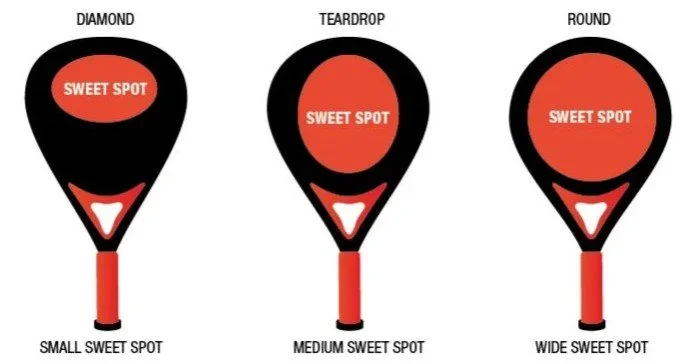Understanding the Sweet Spot on Your Padel Racket: The Key to Better Shots
Most padel players underestimate one of the most crucial factors for a great shot: hitting the ball in the right spot on their racket. This 'sweet spot' is the most effective area on the racket face, and consistently striking the ball there is the fastest way to dramatically improve your game.
What is the Sweet Spot?
The sweet spot is the ideal point of impact on your padel racket. When you connect with the ball in this optimal area, you achieve the best possible result:
Maximum power and speed.
Superior control and accuracy.
Optimal spin application.
Missing the sweet spot, often referred to as a "shank," doesn't just reduce your control; it noticeably changes the sound and feel of the hit. Experienced players and pros can immediately recognize this change, which is why they are so effective at generating consistent, high-quality shots.
Where is Your Sweet Spot Located?
The placement of the sweet spot is primarily determined by your racket's shape, which is essential to know before you buy or switch.
Source: Everything Padel
The Physics Behind the Variation
Why do these spots move? It comes down to weight distribution and the concept of a lever.
Imagine the classic analogy of holding a hammer:
Holding it near the bottom gives you a longer swing and more power (like a head-heavy diamond racket).
Holding it closer to the head gives you better control but less raw power (like a centered round racket).
A racket’s balance plays a major role here. Head-heavy rackets (often diamond) shift mass toward the tip, naturally moving the sweet spot higher. This setup gives aggressive players the momentum needed for powerful smashes and volleys. Conversely, handle-heavy or even-balance rackets provide a more stable and forgiving surface, keeping the sweet spot centered for consistent defense.
Practical Tips: How to Find and Master Your Sweet Spot
Knowing where the sweet spot is isn't enough, you have to train your muscle memory to hit it consistently.
Listen to the Sound: A perfectly struck ball should produce a clean, crisp "pop" or "thwack." If you hear a dull, flat, or metallic sound, you've missed the sweet spot. Use the sound as instant feedback.
Use Overgrips or Tape: Some players use a thin layer of contrasting tape or focus on the logo on the racket face to visually mark their target area. This is especially helpful during practice.
Watch the Pros: Top players like Tapia (who often uses a teardrop) and Majo Sánchez Alayeto (a former pro known for power) consistently aim for the sweet spot—on power rackets, you'll see them making contact visibly higher up on the face. Emulate their contact point.
Practice High-Velocity Drills: The sweet spot is a larger area for slow, soft hits, but it shrinks when you hit the ball with high power and speed. Practice harder volleys, víboras, and smashes to force yourself to be more precise.
Why a New Racket Can Feel 'Off'
If you recently switched rackets and are struggling, it’s highly likely you are still aiming for your old sweet spot.
A common scenario is a player accustomed to a control-focused round racket (with a middle sweet spot) transitioning to a diamond power racket (with a high sweet spot). If they continue to hit the ball in the middle, they are missing the sweet spot entirely, leading to a loss of both power and control.
The Solution: You must intentionally shift your contact point higher up the face and adjust your swing accordingly. Knowing your racket’s sweet spot isn't just theory—it is the practical key to maximizing performance and confidence on the court.
Conclusion: Master the Spot, Master the Game
Understanding the sweet spot is fundamental to improving your padel game. It is the single point that governs your accuracy, power, control, and spin. When trying out new rackets, always pay attention to its shape and balance, it is the first clue to finding the sweet spot that perfectly matches your playing style and will make you a better player.

